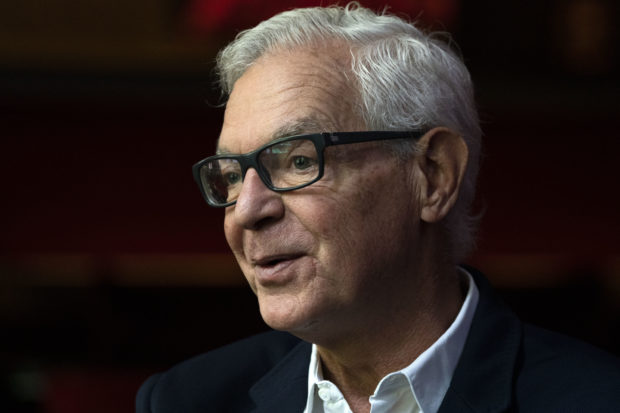By: Laura Bonilla via Agence France-Presse
Eduardo Costantini picked up the telephone and, without hesitating, offered to pay $3.13 million for a major work by Spanish-born Mexican artist Remedios Varo — the jewel of Christie’s most recent auction of Latin American art.
Costantini, a 72-year-old businessman and collector, and one of the richest men in Argentina with an estimated net worth of $1.2 billion, according to Forbes, is used to shelling out big bucks for his passion.
He founded the Museum of Latin American Art of Buenos Aires (MALBA) in 2001, smack in the middle of Argentina’s devastating financial crisis.
Costantini initially donated all 300 works he owned. Two years later, he resumed collecting and has since placed that private collection at the museum’s disposal.
Today, MALBA has about 800 works, and its primary patron says it has “the largest collection of Latin American art on display, without a doubt” — on par with New York’s Museum of Modern Art.
In an interview with AFP at a luxury hotel in the Big Apple, Costantini described how his decades-old love affair with art led him to create the museum — and how it leads him to drop big money over the phone.
He says the idea for the museum came when he decided he wanted to “give a public and social dimension to what was, at the outset, a personal project.”
Costantini, an elegant man who has worked as a banker, trader and now is solely focused on promoting major real estate projects in Argentina, Uruguay and Miami, first dipped his toe into the world of art buying in his 20s.
At that time, he bought two paintings from a gallery.
Since then, he is constantly searching for the very best works by the best Latin American artists.
Varo’s “Simpatia (La rabia del gato),” or “Affection”– the painting he bought at the Christie’s auction in May — is one of those works. It will be part of a major Varo exhibition at MALBA in March 2020.

‘Record after record’
In 1995, Costantini, the son of an Italian immigrant who arrived in Buenos Aires at the start of the 20th century, paid a record $3.2 million for Frida Kahlo’s 1942 “Self-Portrait with Monkey and Parrot.”
But due to a lack of funds, he opted not to acquire during the same auction the spectacular “Dance of Tehuantepec” (1928) done by the other superstar of Mexican art, Diego Rivera.
When Rivera’s painting again became available at auction 21 years later, he pounced, paying a sum no one had ever offered for a work of Latin American art — “a bit more than $16 million.”
The previous record for Rivera, set in 1995, was hardly more than $3 million.
Kahlo and Rivera, the most famous couple in Latin American art, are now “together — MALBA’s happy spouses,” Costantini says with a smile.
He says he paid “record after record” sum for works from Brazil’s Tarsila do Amaral and Emiliano Di Cavalcanti, or Uruguay’s Joaquin Torres Garcia.
But other items he wanted — by Chile’s Roberto Matta or British-born Mexican artist Leonora Carrington — slipped through his grasp, leaving him with a few bitter memories.
Officially, New York’s MoMA is home to the most expensive piece of Latin American art — Costantini says it paid $18 million for Amaral’s 1928 painting “A lua” (The Moon).
The museum did not confirm the amount when asked for comment by AFP.
But MALBA has another by Amaral — “Abaporu,” which could now be worth more than $40 million, even if Costantini only paid $1.3 million in 1995.
The Argentine collector is thrilled that Latin American art is more and more visible in the world’s top museums, such as the Tate Modern in London or the Pompidou Center in Paris.
Those venerable institutions now have full programs dedicated to acquiring art from the region, he says, adding that he believes the value of such works will only increase with time.
‘Survivors’
In revisiting the multiple financial crises that have crippled Argentina, Costantini says he and other businessmen like him are “survivors.”
And despite a recession that hit last year, sending a third of the country’s population below the poverty line, he says MALBA is still functioning, and holding events.
“How lucky it is!” he says, explaining that he acts as something of a “buffer” for the museum in tough times.